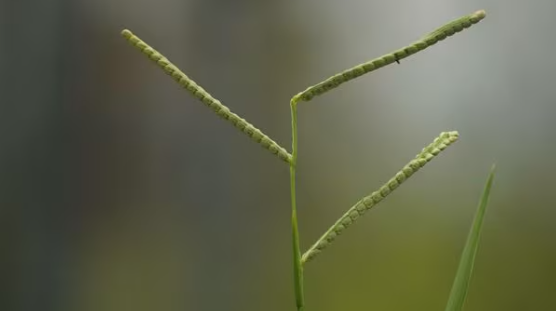Last week, a devastating event struck Madhya Pradesh’s Bandhavgarh Tiger Reserve, resulting in the deaths of ten wild elephants. The initial findings suggest kodo millet poisoning as the probable cause. The first four elephants were discovered dead on October 29 in the Khitoli range’s Sankhani and Bakeli areas. The following day, another four succumbed, and two more were found dead on October 31.

Vijay N Ambade, the Principal Chief Conservator of Forests (Wildlife), has pointed to mycotoxins associated with kodo millet as a possible cause of the elephant deaths. In light of this tragic incident, Madhya Pradesh’s Chief Minister, Mohan Yadav, suspended two senior officials after a high-level investigation team submitted its report. The report explicitly ruled out pesticides and any external factors
What is 'Kodo Millet' ?

Kodo millet, also known as cow grass or rice grass (Paspalum scrobiculatum), is a versatile cereal grain with a rich history. It’s a staple food in Central India, particularly on the Deccan Plateau, and is also cultivated in regions of Asia and Africa like the Philippines, Indonesia, Vietnam, West Africa, Pakistan, and Thailand.
According to APEDA, kodo millet, a grain with origins in India, is rich in fiber and offers numerous health benefits, including potential relief from asthma, migraines, and high blood pressure. Madhya Pradesh is a major producer of this nutritious crop.Kodo millet is used to make popular dishes such as idli, dosa, papad, chakli, porridges, and rotis.
The Farmer's Secret: The Benefits of Kodo Millet
Kodo millet, a resilient crop, is a lifeline for numerous tribal and economically weaker communities in India. It’s packed with nutrients, including vitamins, minerals, and antioxidants, and may even possess anti-cancer properties. Studies indicate that its dietary fiber can positively impact glucose absorption, cholesterol levels, and other metabolic functions.
The Deadly Transformation: How Kodo Millet Turns Poisonous
Kodo millet, while a nutritious food source, can turn deadly under specific conditions. The culprit behind its toxicity is a type of fungus that produces mycotoxins. These mycotoxins, particularly those belonging to the Fusarium species, can contaminate the millet grains during storage or in fields exposed to excessive moisture.
When consumed, these mycotoxin-contaminated grains can lead to severe health issues, including:
- Neurological symptoms: Dizziness, headaches, and seizures
- Gastrointestinal problems: Nausea, vomiting, and diarrhea
- Kidney damage
- In severe cases, death
It’s crucial to store kodo millet in dry, airtight containers to prevent fungal growth and subsequent mycotoxin production. Additionally, proper processing and cooking techniques can significantly reduce the risk of mycotoxin exposure.
The Deadly Impact of Kodo Millet on Animals
Kodo poisoning primarily targets the nervous and cardiovascular systems. Symptoms of kodo poisoning include vomiting, dizziness, loss of consciousness, a weak pulse, cold extremities, and tremors.
Cyclopiazonic acid (CPA) is the villain behind kodo millet poisoning. Studies reveal its devastating impact on various organs. CPA can cause degeneration and cell death (necrosis) in the liver, along with heart muscle damage (myocardial damage). It disrupts the heart’s delicate calcium signaling, leading to impaired function. But CPA’s reach extends beyond the heart. Research suggests it triggers gastrointestinal disorders in animals and increases harmful free radicals (reactive oxygen species) in the gut. This inflammation and damage mirror the symptoms observed by veterinarians treating the sick elephants, as reported by the Indian Express.
The solutions to kodo poisoning
To combat the threat of kodo poisoning, researchers propose a promising solution: biocontrol agents. These beneficial organisms can naturally suppress harmful fungi and their toxic byproducts. Studies have shown that certain microbes can effectively limit fungal growth and mycotoxin production. Additionally, cultivating non-toxic strains of the same fungi can create a protective barrier in fields.
To further mitigate the risk, experts recommend that farmers adhere to good agricultural practices and effective post-harvest management. This includes sorting grains, proper drying, and storing them in airtight containers to minimize mycotoxin levels. By combining these strategies, we can significantly reduce the impact of kodo poisoning and safeguard public health.

